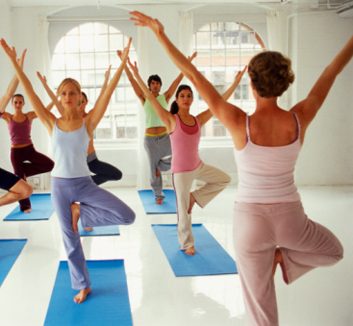
Yoga studio etiquette
Yoga is great exercise, but when you’re in a yoga studio, typical gym rules do not apply. This is not just a workout – but also a spiritual and meditative practice, and one that takes place in small, warm rooms that can get crowded, sweaty and even emotional.
To truly enjoy yoga and share space with others in a yogic spirit, it’s important to conduct yourself in a certain way. Here are 10 things to consider.
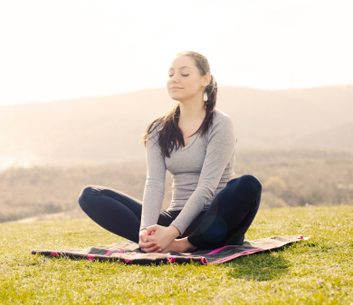
1. Keep it down
At a gym, chatting it up with a workout pal or a trainer is the norm, but a yoga room should stay quiet. “It is considered a meditation space,” says Alison Boons, a yoga instructor and trainer with Yogacara Studios in Vancouver and Whistler. When you walk into the room, even if class doesn’t start for another few minutes, you should move quietly and talk as little as possible. “I’m so surprised when people start having a whispered conversation. Do they think I can’t hear them?” says Michaela Cornell, a longtime yoga practitioner in Toronto. In studios with multiple yoga rooms, you may need to talk quietly before and after class as well, to ensure you don’t disturb other classes in progress.
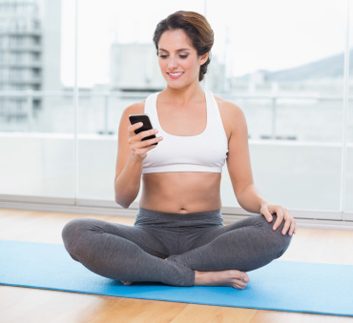
2. Leave electronics at home
Chatting on a cell, texting, checking your messages – none of this is acceptable yogic behaviour. Ideally, leave your phone in a locker, if the studio has one. If you must bring it into the room, put it on silent and out of sight. After class, only pull your gadget out and check your messages after you’ve left the room.
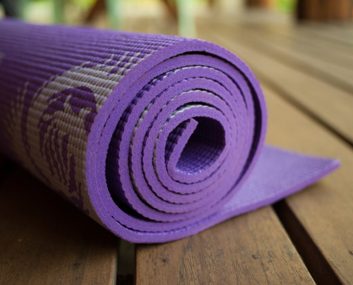
3. Travel light
Do not bring a pile of personal belongings into class. Use the lockers or leave non-valuables in the changeroom. Stuff beyond a bottle of water and a yoga bag clutters the room. Cornell, who regularly does hot yoga, finds backpacks and large purses really distract her. Not only do they make the room crowded, but smelly too. “Anything that’s in there that has a scent is going to be magnified. If someone has a knapsack and someone was smoking around it, that’s going to come out in five minutes,” she says.
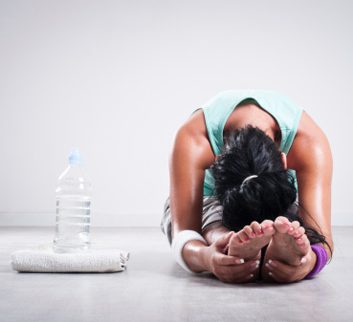
4. Shoes off
Yoga studios are not gyms. You need to take your shoes off in the lobby, never bringing them into the room, and certainly never wearing them while on your mat. “It’s dirty,” says Boons. Similarly, it’s considered very rude to step on someone else’s mat, even in bare feet. It’s a cleanliness and respect issue.

5. Keep it clean
Most yogis wait to shower after class, particularly with hot yoga. But in class you’re going to be sweating, possibly doing partner work and you will likely be touched by your instructor helping you get into a pose. Avoid being embarrassed by having clean clothes and having had a somewhat recent shower. “You should be at least a little bit clean,” says Cornell.
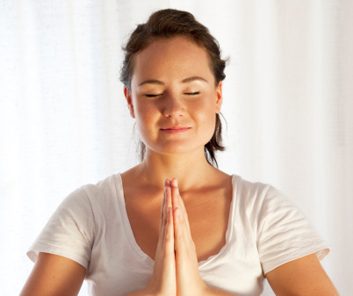
6. Be on time
Yogacara staff actually lock the room once class begins. Not all studios take such a precaution, but walking in late disrupts the class, particularly when the instructors begins with a quiet meditation. Aim to get into the room five-to-10 minutes before class starts as it gives you a chance to set up your mat and props and wind down a little.

7. Don’t leave early
Zipping out the door while others are in Savasana (corpse pose, which you do at the end) also interrupts the class. Sometimes you can’t avoid having to rush out for an early work meeting or tag-teaming with the spouse to deal with kids. Ideally, leave yourself enough time and don’t book things after class, but if you have no choice, tell the teacher in advance (it’s a bit insulting to them to leave with no explanation), do your own quick version of Savasana during the seated postures and make your escape silently while others are transitioning between poses. Fold up your mat outside the room to create as little kerfuffle as possible. Boons says if you suddenly feel ill in a class and can’t continue, pack up deftly and tell the teacher privately why you’re leaving.

8. Share the space
Some studios mark out where mats should be placed. But in most, it’s up to the students to share the space. “Be mindful of where place yours in relation to the room,” says Boons. At the last minute, you may be asked to scoot over – get used to it. Boons has had students refuse to budge. So now she simply does a full class announcement that it’s time to move the mats around to accommodate everyone in the room.

9. Don’t broadcast
When a pose throws you into charley horse or taxes your shoulders, it’s disruptive to the flow of the class to call out to the teacher to explain your issue. “Don’t get everyone involved. Just flag the teacher,” says Boons. If your ache or pain is a common one, the teacher can decide to announce a modification to the pose.
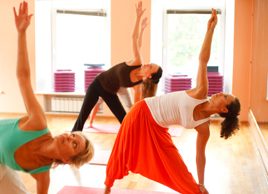
10. Yoga teacher etiquette
Here’s one for the yoga teachers. Cornell finds loud music blaring through a yoga class highly distracting. It also makes it difficult to hear instructions, particularly when you’re lying down and can’t see a demonstrated pose. She’s come across the problem with a few instructors, mainly those with less experience. She now stations herself away from the speakers, just in case.
Related:
• How to choose the yoga style right for you
• How to start an at-home yoga practice
• The 5 most common yoga injuries and how to prevent them
